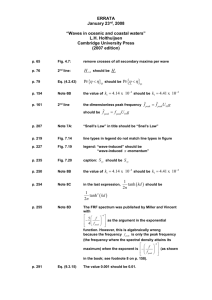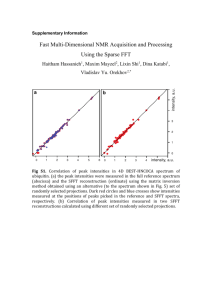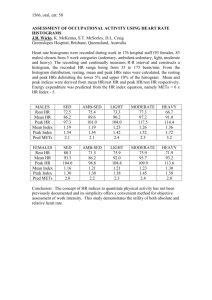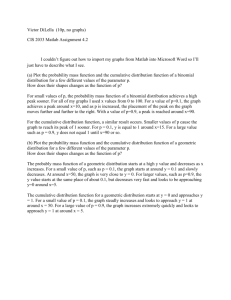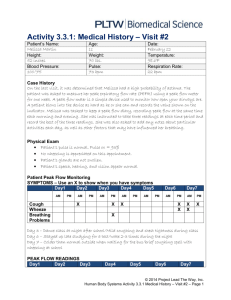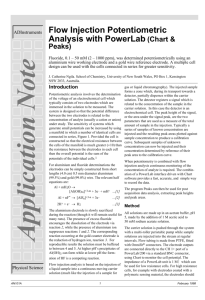Theory of square-wave voltammetry of two electrode reactions
advertisement
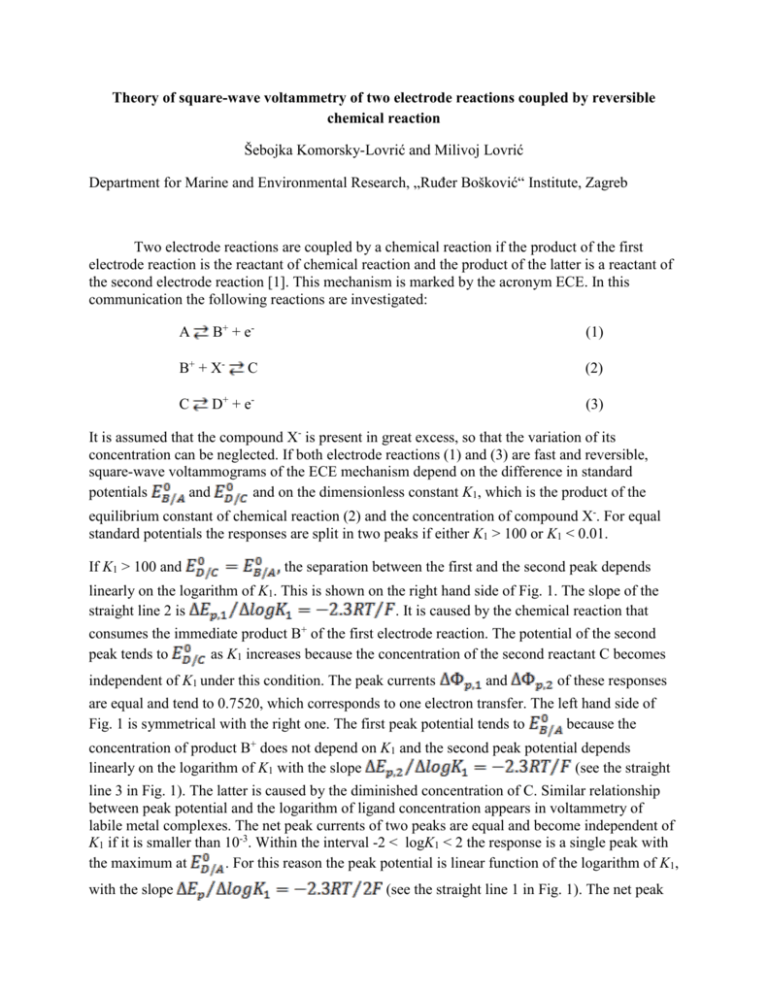
Theory of square-wave voltammetry of two electrode reactions coupled by reversible chemical reaction Šebojka Komorsky-Lovrić and Milivoj Lovrić Department for Marine and Environmental Research, „Ruđer Bošković“ Institute, Zagreb Two electrode reactions are coupled by a chemical reaction if the product of the first electrode reaction is the reactant of chemical reaction and the product of the latter is a reactant of the second electrode reaction [1]. This mechanism is marked by the acronym ECE. In this communication the following reactions are investigated: A B+ + e- B+ + XC (1) C (2) D+ + e- (3) It is assumed that the compound X- is present in great excess, so that the variation of its concentration can be neglected. If both electrode reactions (1) and (3) are fast and reversible, square-wave voltammograms of the ECE mechanism depend on the difference in standard potentials and and on the dimensionless constant K1, which is the product of the equilibrium constant of chemical reaction (2) and the concentration of compound X-. For equal standard potentials the responses are split in two peaks if either K1 > 100 or K1 < 0.01. If K1 > 100 and the separation between the first and the second peak depends linearly on the logarithm of K1. This is shown on the right hand side of Fig. 1. The slope of the straight line 2 is . It is caused by the chemical reaction that consumes the immediate product B+ of the first electrode reaction. The potential of the second peak tends to as K1 increases because the concentration of the second reactant C becomes independent of K1 under this condition. The peak currents and of these responses are equal and tend to 0.7520, which corresponds to one electron transfer. The left hand side of Fig. 1 is symmetrical with the right one. The first peak potential tends to because the concentration of product B+ does not depend on K1 and the second peak potential depends linearly on the logarithm of K1 with the slope (see the straight line 3 in Fig. 1). The latter is caused by the diminished concentration of C. Similar relationship between peak potential and the logarithm of ligand concentration appears in voltammetry of labile metal complexes. The net peak currents of two peaks are equal and become independent of K1 if it is smaller than 10-3. Within the interval -2 < logK1 < 2 the response is a single peak with the maximum at . For this reason the peak potential is linear function of the logarithm of K1, with the slope (see the straight line 1 in Fig. 1). The net peak current is the highest if K1 = 1 and decreases if either K1 > 1 or K1 < 1. The maximum value = 1.5041 is smaller than 1.9115 because the condition decreasing of is not satisfied. The is caused by the gradual separation of two peaks. Before the two net peaks appear, the forward and backward components of the single peak start to separate. If 0.2 K1 5 the difference between peak potentials of forward and backward components is 10 mV. Outside this range the forward component is in maximum at the potential that is higher than the net peak potential, while the potential of minimum of backward component is lower than the net peak potential. Fig. 1 SWV of reversible ECE mechanism. Dependence of peak potentials on the logarithm of dimensionless equilibrium constant of chemical reaction. References 1. Š. Komorsky-Lovrić and M. Lovrić, Anal. Bioanal. Electrochem. 5 (2013) 291-304.
